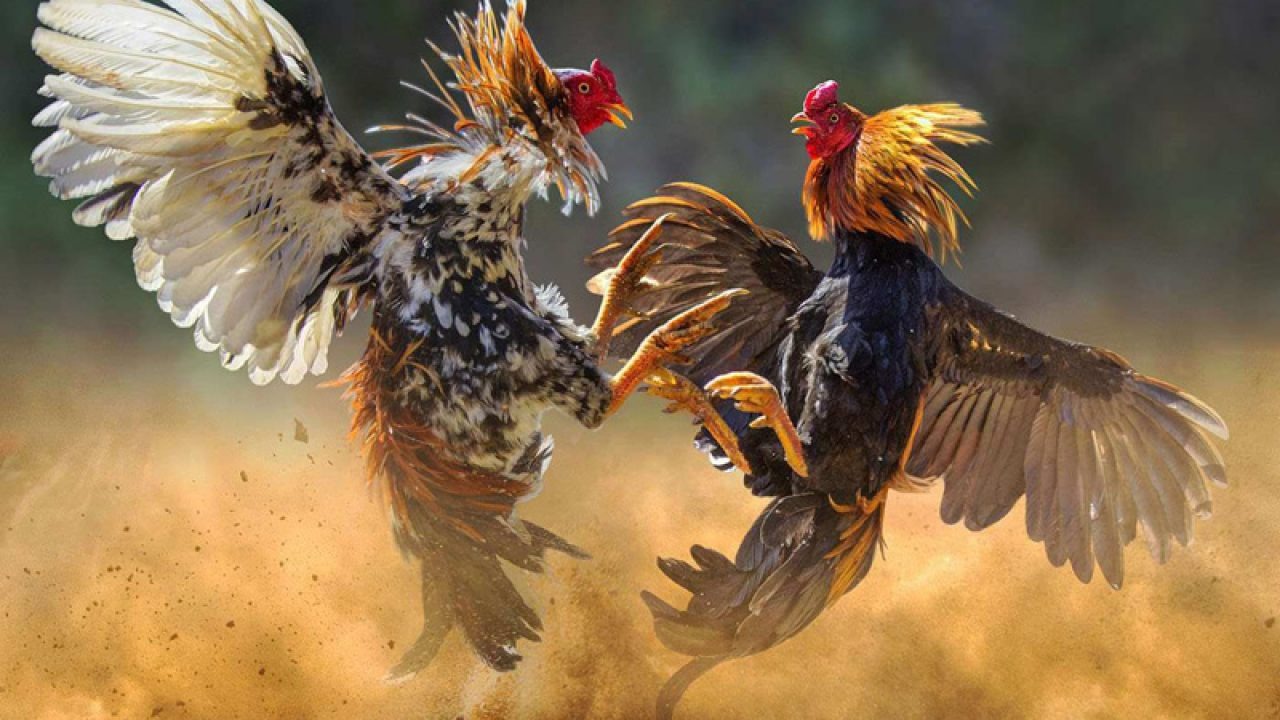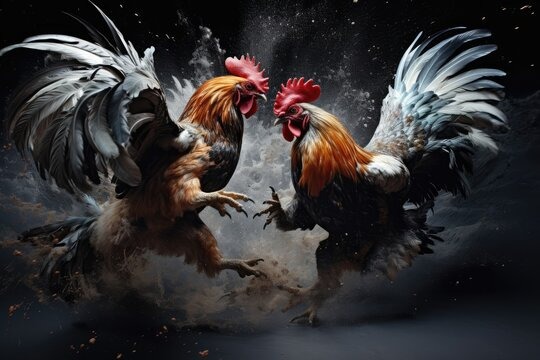Cock Fighting AE888 offers an exhilarating and engaging experience that brings together the thrill of competition, the beauty of these magnificent birds, and the excitement inherent in sports betting. This blog post delves into the world of cockfighting as showcased by AE888, exploring its cultural significance, the intricacies of the sport, and the entertainment it provides to fans worldwide.
The Cultural Significance of Cockfighting

Cockfighting has long been a tradition in various cultures across the globe, often serving as a means of social interaction, entertainment, and community bonding. In this section, we will explore the historical context of cockfighting, its representation in different cultures, and the way it has evolved over time.
Historical Context
The roots of cockfighting can be traced back thousands of years, with evidence suggesting that it originated in Southeast Asia. Early on, these competitions were not merely about entertainment; they also held significant ritualistic meaning.
In ancient civilizations, such as those in Greece and Rome, cockfighting became a popular spectator sport, attracting large crowds and often serving as a demonstration of wealth and power. These events were typically organized by the elite, showcasing their prized roosters while reinforcing their social status.
Over time, the practice spread throughout Europe and eventually made its way to the Americas. In many regions, especially within rural communities, cockfighting transformed from an elite pastime to a grassroots event, accessible to anyone willing to partake.
Representation in Different Cultures
In many cultures, cockfighting is not merely a sport but a deeply ingrained tradition. For instance, in the Philippines, it’s considered a national pastime, where “sabong” (the local term for cockfighting) is celebrated through festivals and gambling events.
In some indigenous cultures, roosters are bred meticulously for fighting, reflecting the traditional values of resilience and honor. The emphasis on breeding techniques showcases a profound respect for the birds, which are viewed as symbols of strength and masculinity.
Meanwhile, in countries like Mexico, cockfighting is often associated with festivities, drawing in large crowds who gather to support their favorite birds. It acts as a social glue, bringing together individuals from diverse backgrounds, united by their passion for the sport.
See more: Đá gà AE888
Evolution Over Time
Although cockfighting has existed for centuries, it has not remained static. In recent years, advancements in technology and changes in societal attitudes have transformed the landscape of cockfighting. While traditional arenas still exist, online platforms such as AE888 have emerged, providing easier access to cockfighting events and wagering opportunities.
Moreover, the integration of technology has introduced live streaming capabilities, giving fans around the world the chance to watch and engage in events from the comfort of their homes. This evolution signifies a shift from localized activities to a global community of cockfighting enthusiasts, breaking geographical barriers and uniting fans with shared interests.
Understanding the Mechanics of Cockfighting

Cockfighting might seem straightforward at first glance, but there’s a complex system of rules, techniques, and strategies involved that enriches the experience for both participants and viewers alike. In this section, we’ll break down the mechanics of cockfighting, covering everything from training and preparation to the rules governing fights.
Training and Preparation
Before a rooster steps into the ring, extensive training and preparation take place. Breeders focus on selecting the right lineage and employing various techniques to enhance the physical abilities of their birds, ensuring competitiveness in the arena.
Training involves conditioning exercises tailored to develop the bird’s agility, strength, and endurance. Roosters are often subjected to rigorous workouts, including sparring sessions with other birds, simulating real fight scenarios. Additionally, nutrition plays a critical role, with specialized diets crafted to promote muscle growth and overall health.
However, training isn’t just about physical prowess. It also emphasizes mental conditioning. A well-trained bird must be able to remain calm under pressure, gauge its opponent’s movements, and react accordingly. Breeders invest considerable time and effort into creating not only strong fighters but intelligent ones as well.
The Rules of Engagement
Cockfighting, like any sport, has established rules to maintain fairness and integrity during matches. Common regulations involve setting weight classes, determining the duration of fights, and establishing conditions for victory.
Typically, a match involves two roosters fighting until one either incapacitates the other or the bout concludes after a predetermined time. The use of spurs—sharp blades attached to the birds’ legs—is also regulated, with varying preferences depending on the region.
Additionally, knowledgeable referees oversee the matches to ensure compliance with rules, allowing for fair play. They assess the health of the birds and determine the validity of injuries sustained during fights. This level of oversight reinforces the importance of ethical practices within cockfighting.
Strategies in the Arena
Much like chess, cockfighting requires strategic thinking and tactical maneuvers. Trainers study both their own birds and their opponents, analyzing strengths and weaknesses. The choice of tactics often hinges on understanding the bird’s behavior, movement patterns, and fighting style.
Aggressive birds may favor offensive tactics, launching direct attacks to overwhelm their opponents. Conversely, more agile roosters might employ evasive tactics, using speed and agility to outmaneuver their foes. The ability to adapt to the unfolding dynamics of a fight can be the deciding factor between victory and defeat.
As spectators, recognizing these strategies adds another layer of excitement to the experience. Fans become engaged observers, cheering for their favorites while anticipating how each match unfolds based on the unique traits exhibited by the competing roosters.
The Betting Culture Surrounding Cockfighting

Betting has always been an intrinsic part of cockfighting culture, contributing significantly to its appeal and drawing in enthusiastic participants. In this section, we will discuss the gambling aspect of cockfighting, examining its history, the types of bets placed, and the impact of online platforms like AE888.
The History of Betting in Cockfighting
The association between cockfighting and gambling dates back centuries. Historically, spectators wagered sums of money on the outcomes of fights in informal settings, gradually evolving into more structured betting systems.
As cockfighting grew in popularity, so did the betting culture surrounding it. In many regions, betting has transformed into a communal activity, where friends and families gather to stake their predictions and share in the excitement of the matches.
This tradition of betting has reinforced the significance of cockfighting as more than just a sport; it has become a social event, fostering camaraderie among participants and spectators alike. The anticipation that accompanies a wager enhances the overall experience, making victories even sweeter (and losses more challenging).
Types of Bets Placed
Various betting formats exist within the realm of cockfighting, catering to the preferences of different gamblers. The most common type is the straight bet, where a participant wagers on the outright winner of a match.
Another popular option is the head-to-head wager, where bettors place stakes on individual roosters based on their perceived abilities. Given the level of analysis that goes into assessing each bird, these bets can lead to intense discussions regarding training, historical performance, and fighting styles.
More sophisticated betting options have emerged, particularly with the rise of online platforms like AE888. Features such as live betting allow gamblers to place wagers during matches, responding to real-time developments. This dynamic format adds an additional layer of engagement, as fans adjust their bets based on the unfolding action.
The Rise of Online Platforms
The advent of technology has revolutionized the betting landscape in cockfighting. Online platforms like AE888 have streamlined the process, allowing fans to engage with cockfighting events from anywhere in the world.
These platforms provide a wide array of betting options, detailed statistics, and live updates, enhancing the overall experience for users. With easy access to information and resources, fans can research details about specific birds, trainers, and fighting styles, leading to more informed betting decisions.
Furthermore, online platforms have contributed to the globalization of cockfighting, connecting enthusiasts from various backgrounds. People who might never have had the chance to attend a live event can now participate in the excitement of betting while enjoying the spectacle of cockfights streamed directly to their devices.
Ethical Considerations Surrounding Cockfighting
While cockfighting has cultural significance and offers entertainment to many, it also raises important ethical concerns that deserve attention. In this section, we will explore the arguments for and against cockfighting, addressing welfare issues, legal implications, and the perspectives of various stakeholders involved.
Welfare Issues
One of the primary ethical concerns surrounding cockfighting is the welfare of the animals involved. Critics argue that forcing roosters to fight can lead to severe injuries or death, raising questions about the morality of such practices. Many animal rights organizations advocate for the prohibition of cockfighting, citing the physical suffering endured by the birds.
Supporters of cockfighting, however, assert that with proper training and care, roosters can be raised in humane environments, resulting in healthy and robust birds. They argue that responsible breeders prioritize the welfare of their animals, taking steps to ensure they are well-treated and cared for outside the ring.
This divergence in viewpoints highlights an ongoing debate about how animal welfare can coexist with cultural traditions. Advocates for cockfighting often emphasize the importance of thoughtful regulation and oversight in ensuring that ethical standards are upheld.
Legal Implications
The legal status of cockfighting varies significantly across countries and regions. In some places, it is legally sanctioned and regulated, while in others, it remains outlawed due to concerns about animal cruelty and public safety.
Regulatory frameworks often dictate how cockfighting may be conducted, including licensing requirements, oversight by authorities, and enforcement of welfare standards. In regions where cockfighting is prohibited, underground matches sometimes arise, complicating efforts to enforce laws and protect animal welfare.
As societies grapple with changing attitudes towards animal rights, the legal standing of cockfighting continues to evolve. Striking a balance between cultural heritage and contemporary ethical standards remains a challenge for policymakers.
Perspectives of Stakeholders
The perspectives of various stakeholders shape the ongoing conversation around cockfighting. Trainers and breeders often view it as a labor of love, dedicating themselves to the craft of raising skilled fighters while nurturing their bond with the animals.
Spectators and bettors enjoy the thrill of competition, embracing the communal aspects of cockfighting. For them, it encapsulates a sense of connection and excitement, providing a venue for social interaction and entertainment.
Conversely, animal rights advocates push for reform and greater protections for animals involved in the sport. They argue for alternatives that preserve cultural traditions without subjecting animals to harm, advocating for ethical treatment and humane practices.
As dialogues continue, it’s crucial to consider the diversity of opinions and experiences surrounding cockfighting. Open discussions that take into account the complexities and nuances of the issue will contribute to shaping a future that balances tradition, enjoyment, and ethical considerations.
Conclusion
Cock Fighting AE888 represents a thrilling intersection of culture, tradition, competition, and entertainment. As we have explored in this blog post, the world of cockfighting encompasses rich historical significance, intricate mechanics, an immersive betting culture, and ongoing ethical discussions.
The evolution of cockfighting, particularly through online platforms, has sparked new interest and growth in this age-old pursuit, creating a vibrant community of enthusiasts who appreciate the artistry and strategy that defines the sport.
As we navigate the complexities that surround cockfighting, it is essential to approach the topic with an open mind, considering the multitude of perspectives that inform our understanding. Ultimately, whether one sees cockfighting as a cherished tradition or a controversial practice, it undeniably captivates the hearts and minds of countless individuals around the world, inviting us all to join in the excitement and spectacle it brings.
CEO Lorenzo
CEO Lorenzo
* Right from the early days when the online betting house MILYON was established and introduced to all players. CEO Lorenzo have identified the most clear goals and directions to elevate this gaming portal to an international level. The primary factor enabling me to achieve this is you - the members engaging in betting at https://milyon88.click/.
Communications:
* Full name: CEO Lorenzo
* Year of birth: March 16, 1988
* Phone number:
* Email:
* Facebook: CEO Lorenzo

